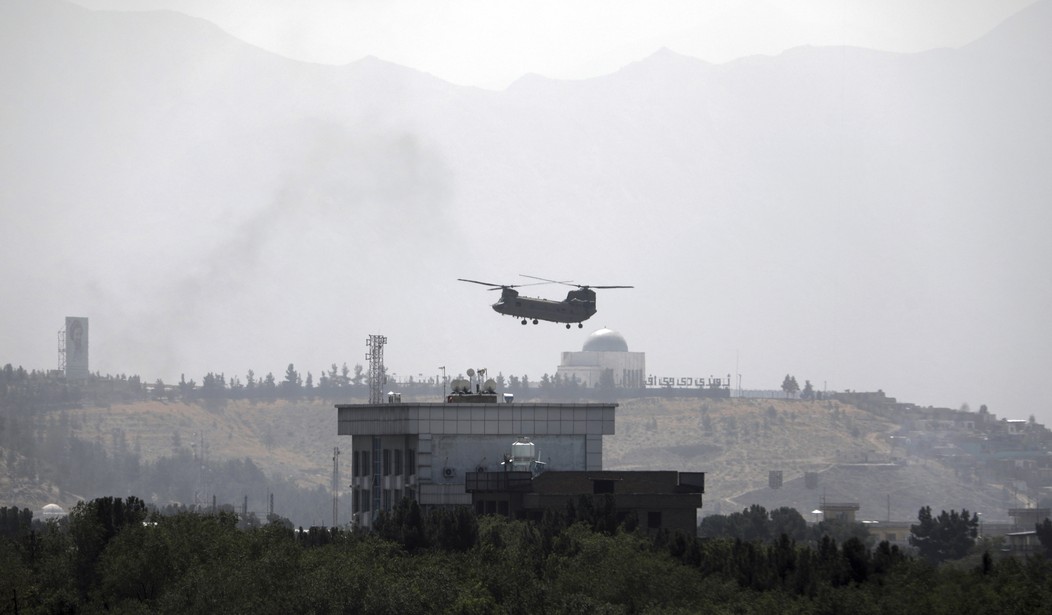A report on the Biden administration's deadly and chaotic withdrawal from Afghanistan commissioned by Secretary of State Antony Blinken was quietly dumped over the Independence Day weekend, and now it's clear why the administration sought to bury its findings.
The State Department's After Action Review (AAR) concluded, unsurprisingly, that there is a "need to plan better for worst-case scenarios" and "ensure that senior officials hear the broadest possible range of views including those that challenge the operating assumptions or question the wisdom of key policy decisions." Because such actions were not taken, the prevailing beliefs and actions were based on "overly optimistic assessments of the situation in Afghanistan" that saw the withdrawal turn more deadly and chaotic than was necessary.
While city after city was captured by the Taliban leading up to the fall of Kabul, the report finds that, even amid "increasing alarm in many circles that led to calls for more urgent preparations for an evacuation, if not the launch of an evacuation itself," American officials "seemed to rely on received assurances that the Ghani government and its security forces...could hold the Taliban at bay for some time."
Such assurances were repeated frequently here in the U.S., as the White House, Pentagon, and State Department insisted the fall of Kabul and the Afghan government was "anything but inevitable" and wouldn't take place over just a matter of days as it ultimately did.
Receiving assurances from Ghani, the AAR emphasized, "does not mean the Department and the interagency could not have been better prepared for a worst-case scenario, especially when it came to planning for a noncombatant evacuation operation (NEO) with the potential to expand into a large humanitarian airlift."
Recommended
Part of the lack of planning, according to the AAR, arose because "many critical domestic and overseas Department positions were not filled by Senate-confirmed appointees, but rather career employees serving in an acting capacity. Those career employees were experienced and capable professionals who did an outstanding job under difficult circumstances, but prolonged gaps in filling senior domestic or chief of mission positions overseas are not in the best interest of the Department or U.S. foreign policy," the AAR states.
As Kabul fell to the Taliban, the lack of preparation for a worst-case scenario nearly turned into even worse chaos at the U.S. Embassy. The AAR explains that despite a "detailed plan to drawdown, evacuate, and secure sensitive materials at the embassy" created by the Regional Security Office (RSO), the evacuation operation was "condensed from three days to less than 24 hours" that saw Diplomatic Security agents and contractors as the last to leave the compound "as gunfire erupted near the helicopter landing areas and looters began coming over the embassy walls."
Other key findings of where things went wrong or missteps were taken by Biden include:
- the decision to hand over Bagram Air Base to the Afghan government meant that Hamid Karzai International Airport (HKIA) would be the only avenue for a possible noncombatant evacuation operation (NEO)
- a plan to retain some U.S. forces to provide critical security, but the details of that – and what stay-behind force the Taliban would accept as consistent with the February 2020 U.S.-Taliban Agreement – had not been clearly established by the time Kabul fell to the Taliban in August 2021
- although the embassy in Kabul was placed on "ordered departure (OD) status at the end of April in the wake of President Biden's decision...that did not result in a notable immediate reduction of the embassy's footprint...because of the need to take on additional roles and responsibilities given the withdrawal of the U.S. military
- up until almost the time Kabul fell, most estimates were that the Afghan government and its forces could hold the city for weeks, if not months...some argued for more urgency in planning for a possible collapse
- U.S. military planning for a possible NEO had been underway...for some time, but the Department’s participation in the NEO planning process was hindered by the fact that it was unclear who in the Department had the lead
- administration officials had not made clear decisions regarding the universe of at-risk Afghans who would be included by the time the operation started nor had they determined where those Afghans would be taken
- constantly changing policy guidance and public messaging from Washington regarding which populations were eligible for relocation and how the embassy should manage outreach and flow added to the confusion and often failed to take into account key facts on the ground
So, as the Taliban ramped up its territorial gains and made its way toward Kabul with its sights set on toppling the Afghan government, the Biden administration lacked appropriate personnel, didn't have a platform for contrarian or dissenting voices to raise concerns, was not sure who exactly was in charge, and didn't have proper plans in place for the worst-case scenario that tragically became the reality.
It remains to be seen whether the Biden administration — especially the State Department specifically at issue in this latest AAR — will take the presented recommendations and plan for the worst in other situations. While the situation in Kabul was unique in some ways, the Biden administration also faced chaotic and rapidly changing situations at other embassies since then, namely in Kiev as Putin's forces invaded Ukraine and in Sudan when U.S. personnel were caught in the crossfire of warring parties in Khartoum.
While it's not an official embassy, the State Department's American Institute in Taiwan (AIT) is now under the gun from Chinese aggression, and it seems as though a worst-case scenario could be in the future there as well — or at the very least is worth preparing for.
In February, the AIT issued a message to Americans about "preparing now for disasters" that provided tips to create a "go-bag" and a "stay-bag" while reminding U.S. citizens in Taiwan to keep their identification and travel documents current and "be ready for a crisis."
While these are good reminders for any American traveling abroad, is the State Department taking its own advice, and the recommendations from the AAR, to ensure the administration is "ready" for any future crises?
The State Department's full AAR can be viewed here.























Join the conversation as a VIP Member